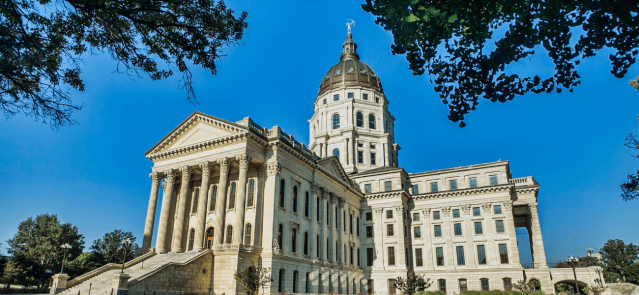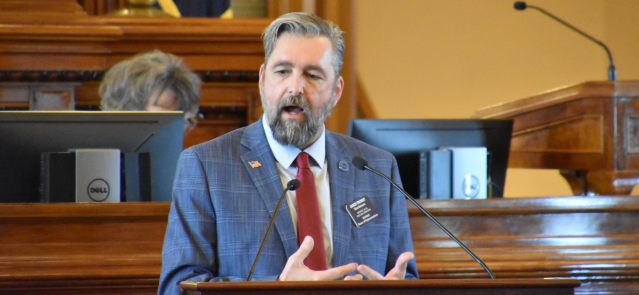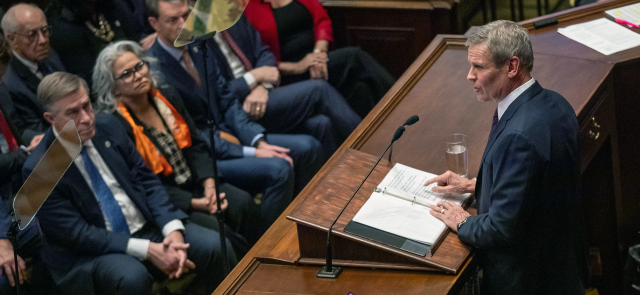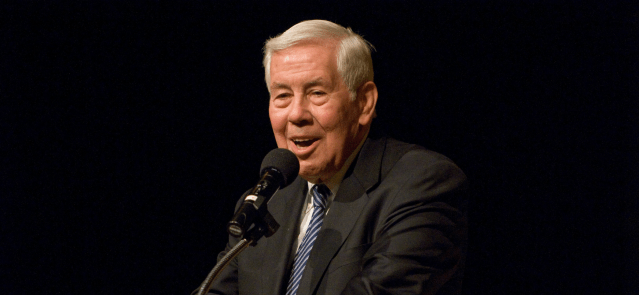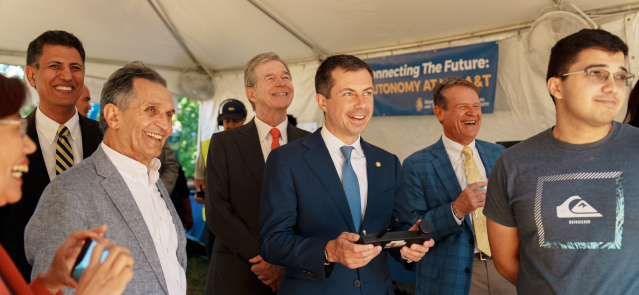State agencies lagging behind schedule and over budget on projects was an emerging theme during this week’s Joint Committee on Information Technology meeting.
Directly after receiving word that a Statehouse security project was roughly a year behind schedule, the committee was informed of myriad issues tied to software implementation projects for the Kansas Department for Children and Families and the Kansas Department for Aging and Disability Services.
Child support services
Tom Pagano, chief information officer for both agencies, updated the committee on progress pertaining to the children and families department’s Child Support Services System initiative.
The initial timeline for the project was 28 months, but Pagano told the committee it’s projected to take 41 months while also $1 million over its original $11.7 million budget. The project centers on the conversion of the agency’s network mainframe to newer technology on a Microsoft platform, Pagano said, adding that state and federal funding is split evenly for the project.
Pagano said the biggest setback involved a “surprise” federal mandate from the Office of Child Support Services requiring “de-identification” or concealment of personal information during the migration process.
“That caused a significant delay because we had to retool in a number of ways to make that happen, and that’s what added seven extra months to the project,” he said. “It also added additional costs to the tune of about $1 million.”
Pagano also pinned blame on project subcontractor Modern Systems, which he said had difficulty handling “a tremendous amount of complicated data” during the conversion process. Some of that related to bandwidth issues, as well as insufficient staffing by the subcontractor, according to Pagano.
He said IBM’s recent purchase of Modern Systems “added another wrinkle” to the project, and he now anticipates it being fully completed by January 2025. Rep. Barb Wasinger, R-Hays, pressed Pagano over “any hiccups” in receiving timely child support payments because of the timeline delays. Pagano indicated he is not intimately involved in the agency’s business “space.” He said someone present in the room could shed light on Wasinger’s question, but nobody spoke up.
“No one seems to be wanting to save you on this answer,” Wasinger said.
Pagano said he made multiple “major” decisions resulting in a reset of the project’s timeline. The first, he said, was opening a more transparent line of communication with project contractor Conduent, involving increased “face-to-face” dialogue. Pagano also said he “reorganized the way” the agencies conducted projects, which included retooling of the agencies’ leadership teams.
Alex Wong, chief information technology architect for the Office of Technology Services, told the committee that a project’s variance for change often correlates with the scope of the project.
“As projects become smaller, there are not as many requirements,” he said.
Health care records
A software “modernization” project tied to the Kansas Department for Aging and Disability Services is $3 million over its original $2.5 million budget and isn’t expected to be wrapped until January 2025, or possibly by December.
The project’s scope includes the implementation of an electronic health care records database and substance abuse disorder module for each of the state’s four mental health facilities via contractor WellSky. Pagano said the “vast majority” of the $3 million in excess costs went to licensing fees and corresponding interfaces pertaining to the purchase of a missing “pharmacy module” that was not included in the original deal with WellSky.
Pagano added that the project proved difficult to execute because infrastructure within the hospitals was “suboptimal.”
“In other words, the wireless [infrastructure] was not present in some areas of the hospital,” he said. “Older facilities have a lot of issues that need to be remedied, so we put into place a plan to attack all that infrastructure.”
Those issues caused Pagano to rework the project’s parameters while also addressing staffing needs necessary to complete the work. Parsons State Hospital and Training Center, Pagano said, is nearing implementation of the WellSky system, while the software should be live at the other hospitals by December.
“It didn’t quite start off the way we hoped, but I think it’s ending on a very good note,” Pagano said.
Committee Vice Chair Rep. Kyle Hoffman, R-Coldwater, congratulated Pagano for the work and brushed off the new $5.5 million cost-estimate, which is covered by state funding.
“It seems to me there wasn’t enough [of an] initial look at what needed to be done before it was started,” he said.
Hoffman also commended Pagano for getting the project “on schedule,” contradicting Pagano’s earlier comment to the committee that the project was three months behind. In addition, Hoffman questioned whether WellSky was the best contractor for the job.
“I just hope that going forward, all the agencies look at everything before they jump into an RFP [request for proposal],” he said, and avoid being told, “‘Oh, we’ll fix that later.’”
Matt Resnick is a statehouse reporter at State Affairs Pro Kansas/Hawver’s Capitol Report. Reach him at [email protected]
Note: The story has been updated to reflect that Rep. Kyle Hoffman is the committee’s vice chair. Sen. Mike Petersen is the committee chair
